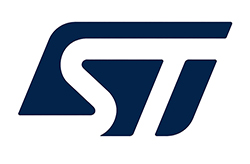Technical Document
Specifications
Brand
STMicroelectronicsClassification
Development Board
Kit Name
STM32 Nucleo-144
Technology
MCU
Device Core
ARM Cortex M7
Processor Family Name
STM
Processor Part Number
STM32F767ZIT6
Processor Type
MCU
Country of Origin
China
Product details
NUCLEO-F767ZI Nucleo-144 Development Board
The NUCLEO-F767ZI Nucleo-144 development board provides a cost-effective and flexible way for users to build prototypes with the STM32F767ZIT6 microcontroller. The Zio connector, which is an extension of Arduino Uno, provides access to more peripherals and with the ST morpho headers expands the functionality with a choice of Shields. The integrated ST-LINK/V2-1 debugger/programmer comes with the STM32 comprehensive software HAL library, software examples, as well as direct access to the ARM mbed on-line resources. Supported by wide choice of Integrated Development Environments (IDEs) including IAR, Keil, GCC-based and ARM mbed.
Features and benefits
- STM32F767ZIT6 216MHz Cortex-M7 core microcontroller with 2MB Flash memory, 512KB SRAM • Adaptive real-time accelerator (ART Accelerator™) allowing 0-wait state execution from Flash memory
- Double-Precision floating-point maths unit
- LCD-TFT controller up to XGA resolution with dedicated Chrom-ART Accelerator™
- 8- to 14-bit parallel camera interface up to 54MB/s
- Up to 28 serial ports: USART, IrDA, I²C, SPI, LIN, CAN, USB, I²S, SDIO, HDMI-CEC, S/PDIF-Rx, Ethernet
-True random number generator
- CRC calculation unit
- RTC with subsecond accuracy and hardware calendar
- 96-bit unique ID
- ST-LINK/V2-1 debugger/programmer with SWD connector
- 3 x LEDs: Power LED, USB communication, User LED
- User and Reset pushbuttons
- USB OTG or FS Device via micro-AB connector
- ST morpho extension pin headers for access to all GPIO
- Full access to all GPIO with ST Zio connector (Arduino Uno v3 Shield connectivity support)
- 32.768 KHz crystal oscillator
- Flexible board power supply
- ARM mbed Enabled (mbed.org)
The STM32F7 microcontrollers feature ST’s ART Accelerator™ as well as an L1 cache and deliver the maximum theoretical performance of the ARM Cortex-M7 core, regardless if code is executed from embedded Flash or external memory. Typical performance figures: 1082 CoreMark / 462 DMIPS at 216MHz clock frequency.
AXI and multi-AHB bus matrixes for interconnecting core, peripherals and memories
Double-Precision Floating-Point maths unit on some variants
Up to 16KB +16KB of I-cache and D-cache
Up to 2MB of embedded Flash memory, with Read-While-Write capability on certain devices
Up to 512KB of data memory, including up to 128KB of Tightly-Coupled Memory for Data (DTCM) for Stacks, Heaps
16KB of Tightly-Coupled Memory for Instructions (ITCM) for time-critical routines
4KB of backup SRAM to keep data in the lowest power modes
Peripheral speed is independent from CPU speed (dual clock support)
Protected code execution feature (PC-ROP) on some variants
Power Efficiency: 7 CoreMark/mW at +1.8Vdc
Applications
Embedded design and development
Stock information temporarily unavailable.
Please check again later.
SR 148.94
SR 148.94 Each (ex VAT)
SR 171.28
SR 171.28 Each (inc. VAT)
1
SR 148.94
SR 148.94 Each (ex VAT)
SR 171.28
SR 171.28 Each (inc. VAT)
1
Technical Document
Specifications
Brand
STMicroelectronicsClassification
Development Board
Kit Name
STM32 Nucleo-144
Technology
MCU
Device Core
ARM Cortex M7
Processor Family Name
STM
Processor Part Number
STM32F767ZIT6
Processor Type
MCU
Country of Origin
China
Product details
NUCLEO-F767ZI Nucleo-144 Development Board
The NUCLEO-F767ZI Nucleo-144 development board provides a cost-effective and flexible way for users to build prototypes with the STM32F767ZIT6 microcontroller. The Zio connector, which is an extension of Arduino Uno, provides access to more peripherals and with the ST morpho headers expands the functionality with a choice of Shields. The integrated ST-LINK/V2-1 debugger/programmer comes with the STM32 comprehensive software HAL library, software examples, as well as direct access to the ARM mbed on-line resources. Supported by wide choice of Integrated Development Environments (IDEs) including IAR, Keil, GCC-based and ARM mbed.
Features and benefits
- STM32F767ZIT6 216MHz Cortex-M7 core microcontroller with 2MB Flash memory, 512KB SRAM • Adaptive real-time accelerator (ART Accelerator™) allowing 0-wait state execution from Flash memory
- Double-Precision floating-point maths unit
- LCD-TFT controller up to XGA resolution with dedicated Chrom-ART Accelerator™
- 8- to 14-bit parallel camera interface up to 54MB/s
- Up to 28 serial ports: USART, IrDA, I²C, SPI, LIN, CAN, USB, I²S, SDIO, HDMI-CEC, S/PDIF-Rx, Ethernet
-True random number generator
- CRC calculation unit
- RTC with subsecond accuracy and hardware calendar
- 96-bit unique ID
- ST-LINK/V2-1 debugger/programmer with SWD connector
- 3 x LEDs: Power LED, USB communication, User LED
- User and Reset pushbuttons
- USB OTG or FS Device via micro-AB connector
- ST morpho extension pin headers for access to all GPIO
- Full access to all GPIO with ST Zio connector (Arduino Uno v3 Shield connectivity support)
- 32.768 KHz crystal oscillator
- Flexible board power supply
- ARM mbed Enabled (mbed.org)
The STM32F7 microcontrollers feature ST’s ART Accelerator™ as well as an L1 cache and deliver the maximum theoretical performance of the ARM Cortex-M7 core, regardless if code is executed from embedded Flash or external memory. Typical performance figures: 1082 CoreMark / 462 DMIPS at 216MHz clock frequency.
AXI and multi-AHB bus matrixes for interconnecting core, peripherals and memories
Double-Precision Floating-Point maths unit on some variants
Up to 16KB +16KB of I-cache and D-cache
Up to 2MB of embedded Flash memory, with Read-While-Write capability on certain devices
Up to 512KB of data memory, including up to 128KB of Tightly-Coupled Memory for Data (DTCM) for Stacks, Heaps
16KB of Tightly-Coupled Memory for Instructions (ITCM) for time-critical routines
4KB of backup SRAM to keep data in the lowest power modes
Peripheral speed is independent from CPU speed (dual clock support)
Protected code execution feature (PC-ROP) on some variants
Power Efficiency: 7 CoreMark/mW at +1.8Vdc
Applications
Embedded design and development
